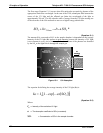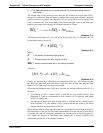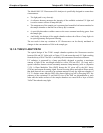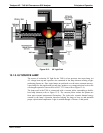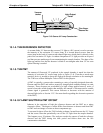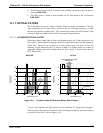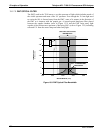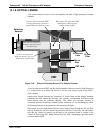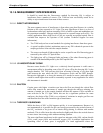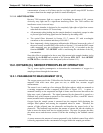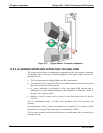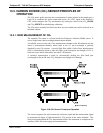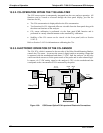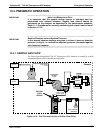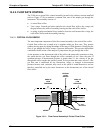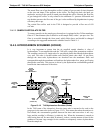
Principles of Operation Teledyne API - T100 UV Fluorescence SO2 Analyzer
288
13.1.9. MEASUREMENT INTERFERENCES
It should be noted that the fluorescence method for detecting SO
2
is subject to
interference from a number of sources. The T100 has been successfully tested for its
ability to reject interference from most of these sources.
13.1.9.1. DIRECT INTERFERENCE
The most common source of interference is from other gases that fluoresce in a similar
fashion to SO
2
when exposed to UV Light. The most significant of these is a class of
hydrocarbons called poly-nuclear aromatics (PNA) of which xylene and naphthalene are
two prominent examples. Nitrogen oxide fluoresces in a spectral range near to SO
2
. For
critical applications where high levels of NO are expected an optional optical filter is
available that improves the rejection of NO (contact Technical Support for more
information).
The T100 Analyzer has several methods for rejecting interference from these gases:
A special scrubber (kicker) mechanism removes any PNA chemicals present in the
sample gas before it the reach the sample chamber.
The exact wavelength of light needed to excite a specific non-SO
2
fluorescing gas is
removed by the source UV optical filter.
The light given off by Nitrogen Oxide and many of the other fluorescing gases is
outside of the bandwidth passed by the PMT optical filter.
13.1.9.2. UV ABSORPTION BY OZONE
Because ozone absorbs UV Light over a relatively broad spectrum it could cause a
measurement offset by absorbing some of the UV given off by the decaying SO
2
* in the
sample chamber. The T100 prevents this from occurring by having a very short light
path between the area where the SO
2
* fluorescence occurs and the PMT detector.
Because the light path is so short, the amount of O
3
needed to cause a noticeable effect
would be much higher than could be reasonably expected in any application for which
this instrument is intended.
13.1.9.3. DILUTION
Certain gases with higher viscosities can lower the flow rate though the critical flow
orifice that controls the movement of sample gas though the analyzer reducing the
amount of sample gas in the sample chamber and thus the amount of SO
2
available to
react with the to the UV light. While this can be a significant problem for some
analyzers, the design of the T100 is very tolerant of variations in sample gas flow rate
and therefore does not suffer from this type of interference.
13.1.9.4. THIRD BODY QUENCHING
While the decay of SO
2
* to SO
2
happens quickly, it is not instantaneous. Because it is
not instantaneous it is possible for the extra energy possessed by the excited electron of
the SO
2
* molecule to be given off as kinetic energy during a collision with another
molecule. This in effect heats the other molecule slightly and allows the excited electron
to move into a lower energy orbit without emitting a photon.
The most significant interferents in this regard are nitrogen oxide (NO), carbon dioxide
(CO
2
), water vapor (H
2
O) and molecular oxygen (O
2
). In ambient applications the
quenching effect of these gases is negligible. For stack applications where the
06807C DCN6650



